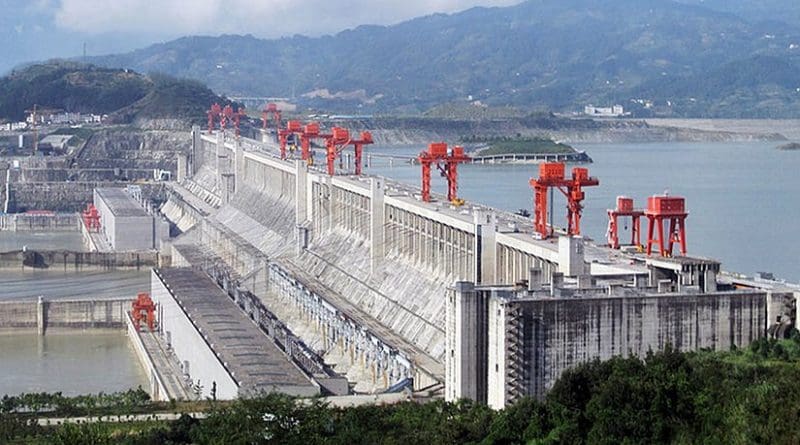How Asia Will Lead The Clean Energy Revolution – Analysis
By Carrie Winters*
Donald Trump’s primary focus might be making America “great again,” but it seems he is actively seeking mediocre or worse status when it comes to one area: cutting carbon emissions. The Mar-a-Lago summit between Trump and China’s Xi Jinping only served to drive this point home: whereas former American presidents used energy policy as a bridge to cooperation with Beijing, the new US leader flippantly left the global crisis he once wrote off as a “hoax” off the agenda.
As Trump has settled into the Oval Office, his administration has begun honouring its pledge to undo the progress US energy policy had made under his predecessor. Last month, as he set about unravelling Obama’s nascent attempts to tackle climate change, Trump declared: “together we are going to start a new energy revolution.”
Trump’s plans may be many things, but a “revolution” is not one of them. Instead, they have a distinctively regressive edge, focusing on traditional fuel sources such as coal, oil and natural gas. In fact, there was no mention of any type of renewable energy or indeed climate change at all. This abandonment of clean energy is a stunning role reversal from just a few months ago, when the US was at the vanguard of the quest to cut carbon emissions.
Fortunately for the rest of the planet, however, the once-climate conscious US has an unlikely successor: China, which finally seems to be developing an appetite for carbon reduction that matches its once-insatiable love of carbon production. The Chinese National Energy Administration recently confirmed its intention to invest at least US$360 billion on renewable energy development by 2020, and the country has already become the largest market for renewable energy, with 34GW of solar photovoltaic capacity and 23GW of wind power capacity installed in 2016 alone.
That commitment to renewable energy is only set to grow. In taking an overall look at China’s energy infrastructure, the majority of annual net capacity additions have been clean energy projects such as wind and hydro. Lining up with the Chinese governments’ plans, the International Energy Agency forecasts that that around 300GW worth of clean energy tech, mainly wind, solar PV and bio-energy, will be installed in China in the next five years.
In this, China is spearheading an embrace of clean and renewable energy technologies that is sweeping across Asia and fundamentally altering the policies of even those countries most implicated in the fossil fuel industry. To take one key example, representatives from 115 countries are set to travel to Kazakhstan between June and September this year for the city’s Astana Expo 2017, which will focus on emerging technologies that will help cut carbon dioxide emissions and protect the environment.
The Astana Expo 2017 will showcase both small and large-scale projects designed to contribute to truly sustainable transport and energy generation, and some of those on display could have major implications for facets of everyday life that currently contribute to climate change. One such project is the Solar Impulse, which became the first solar-panelled airplane to successfully complete a “round-the-world” flight, traveling 40,000 kilometres using the energy generated by 17,000 solar cells and emitting no carbon dioxide whatsoever. Others, like the Glowee project from France, look to natural solutions for providing light without needing to burn fuels to create energy. In Glowee’s case, bioluminescent bacteria are used to illuminate urban settings without needing any connection to the grid.
The expo’s host, Kazakhstan, clearly recognises the importance of emissions-free energy sources, despite the fact that its own economy runs on fossil fuels. Hosting Astana Expo 2017 signals a recognition that the world is changing and a willingness to support sustainable energy and ensure that the country is part of the solution. As the commissioner of the Expo wrote last year in explaining his country’s choice of theme: “Green energy – affordable, reliable and environmentally sustainable – is at the heart of the answer to how we protect our planet while enabling prosperity to spread.”
Other Asian economies have also taken this message to hear. India has created a $679 million solar power plant of gargantuan proportions in Tamil Nadu. By covering an area of 10 square kilometres and generating up to 648MW, it is now the world’s largest solar plant at a single location… and was built in a span of just eight months. Estimated to produce enough electricity to power 150,000 homes, the plant has brought India’s total installed solar capacity to around 10GW. By 2022, the country aims to power 60 million homes using the sun. Japanese plant engineering companies are pursuing their own clean energy projects: IHI and Chiyoda look to use hydrogen as an energy source, aiming to have an ammonia-fuelled hydrogen power plant online by around 2020.
As progress in this area continues apace, Asian manufacturers will continue to come up with better and cheaper methods of lowering carbon emissions. America, under Trump’s policies, will inevitably lag behind. This may be a very inconvenient truth for the American president: if he continues to allow his Luddite attitudes to energy and renewables to permeate policy, it won’t just be the environment he damages.
Source: This article was published at Modern Diplomacy

